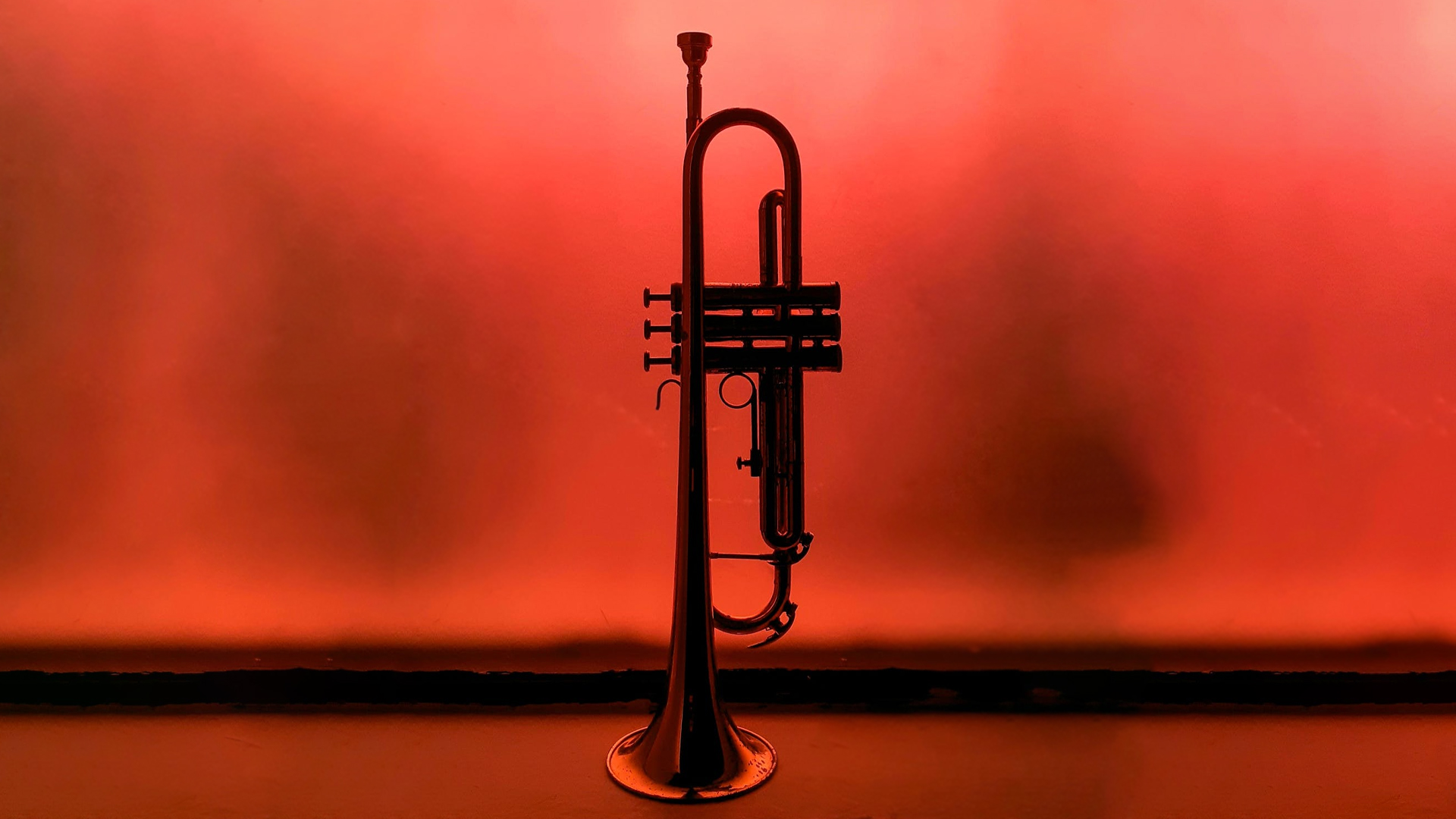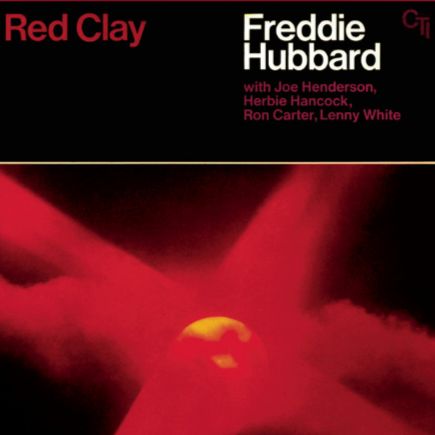Freddie Hubbard, la trompette flamboyante du modern jazz
Freddie Hubbard s’impose comme l’un des plus grands trompettistes de l’histoire du jazz, par la puissance de son jeu, la précision de son phrasé et une créativité qui marqua durablement le bebop, le hard bop et leurs prolongements. Né dans une famille de musiciens, il se forme très jeune à la trompette et rejoint rapidement les ensembles locaux, collaborant avec les Contemporaries puis avec les Montgomery Brothers — Wes à la guitare, Buddy au vibraphone et Monk à la basse électrique.
En 1958, Freddie Hubbard s’installe à New York, haut lieu de l’effervescence jazzistique. Il se fait d’abord remarquer au Turbo Village, auprès du saxophoniste Joe Cameron, avant de former son propre groupe. Dès 1959, il est appelé par Sonny Rollins pour une tournée à San Francisco, expérience courte mais décisive. L’année suivante, il joue dans l’octet de Slide Hampton ainsi qu’au sein du sextet de J. J. Johnson, tout en devenant un habitué des célèbres lundis du Birdland.
À seulement 21 ans, il enregistre en 1960 son premier album en tant que leader, Open Sesame, qui l’installe d’emblée au sommet de la trompette jazz. Ces débuts fulgurants le conduisent à collaborer avec des figures majeures: Dexter Gordon (Doin’ Alright), Oliver Nelson (The Blues and the Abstract Truth), Quincy Jones (The Quintessence) ou encore Jackie McLean (Bluesnik). En 1961, il rejoint Art Blakey et ses Jazz Messengers, en remplaçant Lee Morgan. Pendant trois ans, il y forge un style à la fois lyrique et incisif, au point d’être surnommé dans certains cercles le ‘nouveau Miles Davis’.
Hubbard poursuit ensuite une carrière prolifique. Dans les années 1960, il signe des albums de référence comme Hub-Tones (1962) ou Backlash (1966), où s’affirme son engagement dans le hard bop, tout en explorant de nouvelles textures sonores. Les années 1970 voient son entrée dans le quintette V.S.O.P. dirigé par Herbie Hancock, qui propose une fusion originale de bebop, de jazz modal et de free jazz. Avec Red Clay (1970), il livre un disque devenu mythique, à la croisée du hard bop et du jazz fusion, qui influencera toute une génération de musiciens.
Freddie Hubbard, la trompeta deslumbrante del modern jazz
Freddie Hubbard se impone como uno de los más grandes trompetistas de la historia del jazz, por la potencia de su interpretación, la precisión de su fraseo y una creatividad que marcó de manera duradera el bebop, el hard bop y sus prolongaciones. Nacido en una familia de músicos, se formó muy joven en la trompeta y pronto se unió a los conjuntos locales, colaborando con los Contemporaries y más tarde con los Montgomery Brothers — Wes en la guitarra, Buddy en el vibráfono y Monk en el bajo eléctrico.
En 1958, Hubbard se instaló en Nueva York, epicentro de la efervescencia jazzística. Primero se dio a conocer en el Turbo Village, junto al saxofonista Joe Cameron, antes de formar su propio grupo. En 1959 fue convocado por Sonny Rollins para una gira en San Francisco, una experiencia breve pero decisiva. Al año siguiente, tocó en el octeto de Slide Hampton y en el sexteto de J. J. Johnson, convirtiéndose además en un habitual de los célebres lunes del Birdland.
Con apenas 21 años, grabó en 1960 su primer álbum como líder, Open Sesame, que lo situó de inmediato en la cima de la trompeta jazz. Estos inicios fulgurantes lo llevaron a colaborar con figuras mayores: Dexter Gordon (Doin’ Alright), Oliver Nelson (The Blues and the Abstract Truth), Quincy Jones (The Quintessence) o Jackie McLean (Bluesnik). En 1961 se unió a Art Blakey y sus Jazz Messengers, en sustitución de Lee Morgan. Durante tres años forjó allí un estilo lírico e incisivo, hasta el punto de ser llamado en algunos círculos el “nuevo Miles Davis”.
Hubbard continuó después una carrera prolífica. En los años sesenta firmó discos de referencia como Hub-Tones (1962) o Backlash (1966), donde reafirmó su compromiso con el hard bop, al tiempo que exploraba nuevas texturas sonoras. En los setenta ingresó en el quinteto V.S.O.P. dirigido por Herbie Hancock, que proponía una fusión original de bebop, jazz modal y free jazz. Con Red Clay (1970), entregó un disco mítico, en la encrucijada entre hard bop y jazz fusion, que influenció a toda una generación de músicos.
Freddie Hubbard, la tromba fiammeggiante del modern jazz
Freddie Hubbard si afferma come uno dei più grandi trombettisti della storia del jazz, grazie alla potenza del suo suono, alla precisione del fraseggio e a una creatività che ha lasciato un segno duraturo nel bebop, nell’hard bop e nei loro sviluppi. Nato in una famiglia di musicisti, si formò giovanissimo alla tromba ed entrò presto negli ensemble locali, collaborando con i Contemporaries e successivamente con i Montgomery Brothers — Wes alla chitarra, Buddy al vibrafono e Monk al basso elettrico.
Nel 1958 Hubbard si trasferì a New York, epicentro della vitalità jazzistica. Si fece notare al Turbo Village accanto al sassofonista Joe Cameron, prima di formare il suo gruppo. Nel 1959 fu chiamato da Sonny Rollins per un tour a San Francisco, un’esperienza breve ma decisiva. L’anno seguente suonò nell’ottetto di Slide Hampton e nel sestetto di J. J. Johnson, diventando anche un habitué dei celebri lunedì del Birdland.
A soli 21 anni registrò nel 1960 il suo primo album da leader, Open Sesame, che lo collocò immediatamente all’apice della tromba jazz. Questi inizi folgoranti lo portarono a collaborare con figure di primo piano: Dexter Gordon (Doin’ Alright), Oliver Nelson (The Blues and the Abstract Truth), Quincy Jones (The Quintessence) e Jackie McLean (Bluesnik). Nel 1961 si unì ad Art Blakey e ai suoi Jazz Messengers, sostituendo Lee Morgan. Vi rimase per tre anni, sviluppando uno stile lirico e incisivo, al punto da essere soprannominato in alcuni ambienti il “nuovo Miles Davis”.
Hubbard proseguì quindi con una carriera prolifica. Negli anni Sessanta firmò album di riferimento come Hub-Tones (1962) e Backlash (1966), riaffermando il suo impegno nell’hard bop ed esplorando nuove sonorità. Negli anni Settanta entrò nel quintetto V.S.O.P. guidato da Herbie Hancock, che proponeva una fusione originale di bebop, jazz modale e free jazz. Con Red Clay (1970) consegnò un disco divenuto mitico, a metà strada tra hard bop e jazz fusion, che avrebbe influenzato un’intera generazione di musicisti.
Freddie Hubbard, the blazing trumpet of modern jazz
Freddie Hubbard stands as one of the greatest trumpeters in jazz history, defined by the power of his playing, the precision of his phrasing, and a creativity that left a lasting mark on bebop, hard bop, and their extensions. Born into a family of musicians, he trained on the trumpet at an early age and soon joined local ensembles, collaborating with the Contemporaries and later with the Montgomery Brothers — Wes on guitar, Buddy on vibraphone, and Monk on electric bass.
In 1958, Hubbard moved to New York, then the epicenter of jazz innovation. He first attracted attention at the Turbo Village with saxophonist Joe Cameron before forming his own group. In 1959, he was recruited by Sonny Rollins for a San Francisco tour, a brief but decisive experience. The following year, he played in Slide Hampton’s octet and in J. J. Johnson’s sextet, while becoming a regular at the famed Monday nights at Birdland.
At only 21, he recorded his first album as a leader in 1960, Open Sesame, which immediately placed him at the forefront of jazz trumpet. These dazzling beginnings led him to collaborate with major figures: Dexter Gordon (Doin’ Alright), Oliver Nelson (The Blues and the Abstract Truth), Quincy Jones (The Quintessence), and Jackie McLean (Bluesnik). In 1961, he joined Art Blakey and the Jazz Messengers, replacing Lee Morgan. For three years, he honed a style both lyrical and incisive, earning in some circles the nickname “the new Miles Davis.”
Hubbard went on to a prolific career. In the 1960s, he produced landmark albums such as Hub-Tones (1962) and Backlash (1966), affirming his commitment to hard bop while exploring new sonic textures. The 1970s saw him join the V.S.O.P. quintet led by Herbie Hancock, which offered an original fusion of bebop, modal jazz, and free jazz. With Red Clay (1970), he delivered a now-legendary album, positioned at the crossroads of hard bop and jazz fusion, one that went on to inspire an entire generation of musicians.



